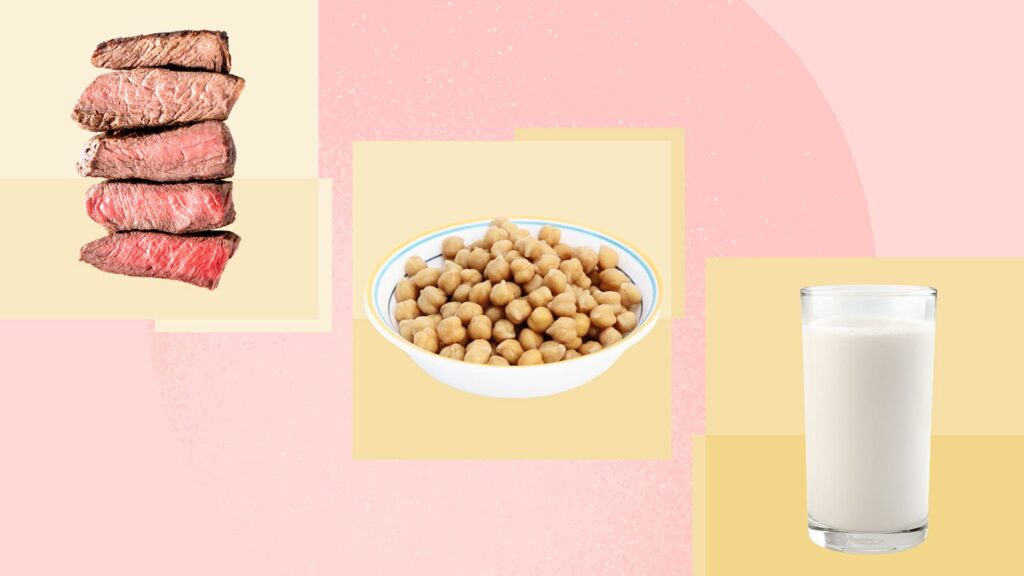Shingles is a painful condition caused by the herpes zoster virus. About 1 million people in the United States get shingles every year, according to the Centers for Disease Control and Prevention (CDC), so it’s important to know how to treat the condition and what to avoid if you get shingles.
If you had chicken pox, you’re susceptible to shingles, and your risk increases as you get older. While antiviral drugs may mitigate your symptoms while you have shingles, your diet is important, too. Wondering what not to eat with shingles? Foods to avoid with shingles include low-nutrient foods and those with the amino acid L-arginine.
About Shingles Infections
Shingles is caused by a type of herpes virus that affects the nerves. The full name is the varicella-zoster virus, according to the CDC — the very same virus that causes chicken pox.
If you had chicken pox as a child, the virus remains dormant in your body. The virus sits in the nerve cells; when it becomes reactivated, it appears as shingles. In most people, the virus stays dormant and doesn’t awaken to manifest as shingles.
If you have shingles, you can pass the varicella-zoster virus to another person and cause chicken pox if that person has never had chicken pox or never received the chicken pox vaccine. Shingles itself is not contagious.
According to the CDC, you may have a higher risk of getting shingles under these circumstances:
- You had chicken pox.
- You have or had medical conditions that compromise your immune system.
- You’re an older adult.
- You take drugs that inhibit immune system function.
Diet is not a risk factor for shingles, but what you eat can affect how the infection progresses and affects you.
The CDC identifies the following symptoms of shingles:
- Painful tingling and itching of the skin
- Eruption of painful blisters or sores, often on one side of the body
Treatment for Shingles
Shingles can’t be cured, but it can be managed with antiviral drugs such as acyclovir, valacyclovir, or famciclovir, according to Mayo Clinic. See your doctor as soon as you start to notice any symptoms of shingles. The sooner you start these medications, the greater the likelihood of shortening the attacks and decreasing the severity of your case.
You may also be prescribed anti-inflammatory corticosteroids, such as prednisone, for shingles treatment, especially if shingles has affected the eyes or other facial nerves, according to MedlinePlus.
Lifestyle changes can also help you deal with a shingles outbreak. Relaxation and stress reduction, gentle exercise like walking, and the application of cool, damp clothes on the blisters also helps.
Shingles blisters scab over in 7 to 10 days and fully clear up on their own in about two to four weeks, according to the CDC.
A Shingles Diet Helps
The shingles virus thrives when your immune system isn’t strong. What you eat can affect the strength of your immunity, according to the Academy of Nutrition and Dietetics. Add nutrients that boost your immune system to your diet when you have a shingles outbreak:
- Beta carotene from sweet potatoes, spinach, carrots, mangoes, broccoli, and tomatoes
- Vitamin C from citrus, berries, melons, tomatoes, bell peppers, and broccoli
- Vitamin D from fatty fish and eggs
- Zinc from beef, seafood, wheat germ, beans, nuts, and tofu
- Probiotics from yogurt and fermented foods.
- Protein from milk, yogurt, eggs, beef, chicken, seafood, nuts, seeds, beans, and lentils
Foods to avoid with shingles include those that degrade your immune system like fast and fried foods, anything high in saturated fat or added sugar, and processed foods.
Avoid Arginine Foods
It’s long been known that the amino acid arginine stimulates the replication of herpeslike viruses, as shown in a landmark study published in 1981 in Chemotherapy.
A paper published in 2018 in Frontiers in Microbiology explains that virus replication depends on the availability of amino acids, particularly arginine. However, research hasn’t definitively shown that temporarily adhering to a restricted arginine diet reduces the severity of viruses, including shingles. Though that doesn’t mean you can’t try limiting your intake of certain products to discourage the proliferation of shingles.
Can you eat eggs, cheese, or chicken when you have shingles? According to Cleveland Clinic, arginine is a component of many foods:
- Meat (red meat, chicken, turkey)
- Fish (salmon, haddock)
- Nuts and seeds (almonds, cashews, pumpkin seeds)
- Legumes (soybeans, chickpeas)
- Whole grains (brown rice, oats)
- Dairy products (milk, yogurt, cheese)
Reduce your intake of these foods and boost your intake of healthy produce to minimize your exposure to arginine. Chocolate is also a source of arginine; leave it off the menu during your shingles outbreak.
You don’t have to cut out these foods altogether, just limit their role in your meals.
If you take L-arginine supplements or medications with the amino acid, ask your doctor about stopping use during your shingles outbreak. Some people take L-arginine for heart and blood vessel conditions, erectile dysfunction, and improved athletic performance, according to Mayo Clinic.
Lysine as a Possible Solution
Lysine is another amino acid that is an important component of protein, according to StatPearls. Your body can’t make lysine, so you have to get it from food or supplements. The significance of lysine is that it may inhibit the growth of herpes viruses, such as cold sores and genital herpes. The varicella-zoster virus is a herpes strain.
Lysine has antiviral effects that block the activity of arginine, according to a review published in 2022 in the British Journal of Clinical Pharmacology. It’s not clear that lysine would help ease the duration or symptoms of shingles, but eating more foods with lysine could help.
Foods rich in lysine that don’t also contain arginine include shellfish, pork, eggs, beans, and lentils.

